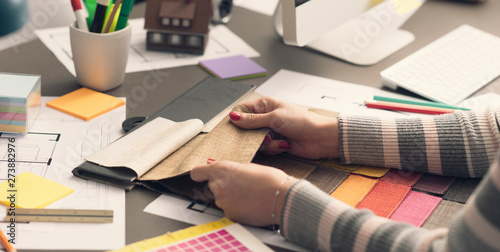Whether it's a household treasure or pre-owned purchase, antique furnishings is a real reflection of what a home truly is - an extension of yourself. Our straightforward upholstery ideas show how to take these distinct home furnishings and make them truly your own.
1. Restore Your Furniture
Bring an old furniture piece back to life with strong, luxurious fabrics that enhance-or play against-the shape of your piece. Perhaps it's a French paisley pattern that repeats the curve of the legs of a stool, or a bold graphic textile that neutralizes clean, peaceful lines.
Whatever your look, with a few basic steps and the ideal fabric, creating an unique piece is so simple. And because you just need a backyard or two of fabric, this is the best job for spending lavishly on a stunning silk or distinctive pattern you've been eyeing. With custom upholstering, you can bring any furnishings piece back to life and include depth, texture and color to your space.
2. Choose Wisely
Consider these concepts when picking furniture and fabric for a winning combination:
Select your furniture first: The fabric you utilize will depend upon your furniture piece. If you already have a fabric you are in love with or a treasure textile, then you can tailor your furnishings search to the fabric. When searching furniture, try to find pieces that have a durable, ornamental frame and a removable seat cushion. Think about pieces like ottomans, footstools, side stools, piano stools, dining chairs and little benches.
The shape of things: Use the shape of your furniture as a guide for selecting a fabric. If the piece features rounded edges and circular details, look for materials that echo these curves-think ornate paisleys and florals. For a square or rectangular piece, fabrics that share the exact same geometric lines will look best. To put a serious twist on your appearance, try producing tension by pairing a free-flowing flower print with a heavy, masculine furnishings piece. Contrasting aspects includes instantaneous depth and texture and is a major pattern in current decoration.
Unanticipated finds: When looking for your furnishings, get creative with the locations you browse. Maybe there's an old piece gathering dust in your attic or an one-of-a-kind find your pal is throwing away. You can likewise search local flea markets, antique shops and yard sale. Just make sure the piece has a seat that is screwed down and pops off quickly. These cushions are typically comprised of a piece of wood cushioned by foam. Many furniture pieces are built in this manner, making it easy to use new fabrics.
3. Measuring Up Materials
When it concerns choosing a fabric for your upholstery task, the choices are virtually unlimited. Make certain your fabric is of upholstery grade-tougher and heavier than drapery or fashion varieties-and then let your imagination run wild.
Consider swatches in bold colors, vibrant patterns and intriguing textures. Attempt colors like burnt orange, deep plum and Kelly green that will pop against wood and include a splash of color to an otherwise neutral area. Textures like satin, velour and suede produce heat and depth, while oversized prints play with scale and proportion for added interest.
As you're combing through options, remember that various fabrics can be applied in upholstery form. Bring instantaneous texture and depth with unforeseen choices like embroidery, crewel work, cross-stitch, cotton carpets, wool rugs, batiks and tweeds.
Procedure two times, cut when: When upholstering any furniture seat, the piece of fabric should be big enough to completely cover the leading and wrap over the sides. At the fabric store, cut your fabric with an extra allowance to make sure the fabric can be safely fastened to the bottom of the seat.
Something special: Upholstering a seat doesn't need a big quantity of fabric, meaning you can spend lavishly and buy an "occasional" fabric. Occasional materials feature more luxurious styles, dyes and thread counts than common materials. Go ahead, select something you wouldn't generally think about and pump up the wow factor in your home.
4. Upholstery Basics
Once you've selected your fabric and a furnishings piece with a detachable seat, you're all set to start upholstering.
Ask a Pro
Some furnishings pieces require expert upholstering-if your piece is totally covered in fabric or has upholstered seat backs, a specialist ought to manage the project. Think about these clever ideas and techniques when turning over your furniture:
Try to find an upholsterer that comes highly recommended. If professional designers and designers regular the business, it's likely a great choice. Once you discover an upholsterer, observe samples of his or her work. Look carefully at the showroom pieces, taking a look at the edges for clean lines and straight piping. When you have actually chosen an upholstery company Singapore, discuss your project in detail-talk about the vision you have for the piece and bring fabric examples to support your concepts.
Upholstering is an easy and unique method to bring a distinct, personalized design piece into your home. Whether it's an armchair that's been passed down for generations or a unique treasure textile, blending the old with the new deepens your home style and enhances your space's character.

Comments
Post a Comment